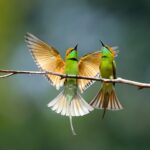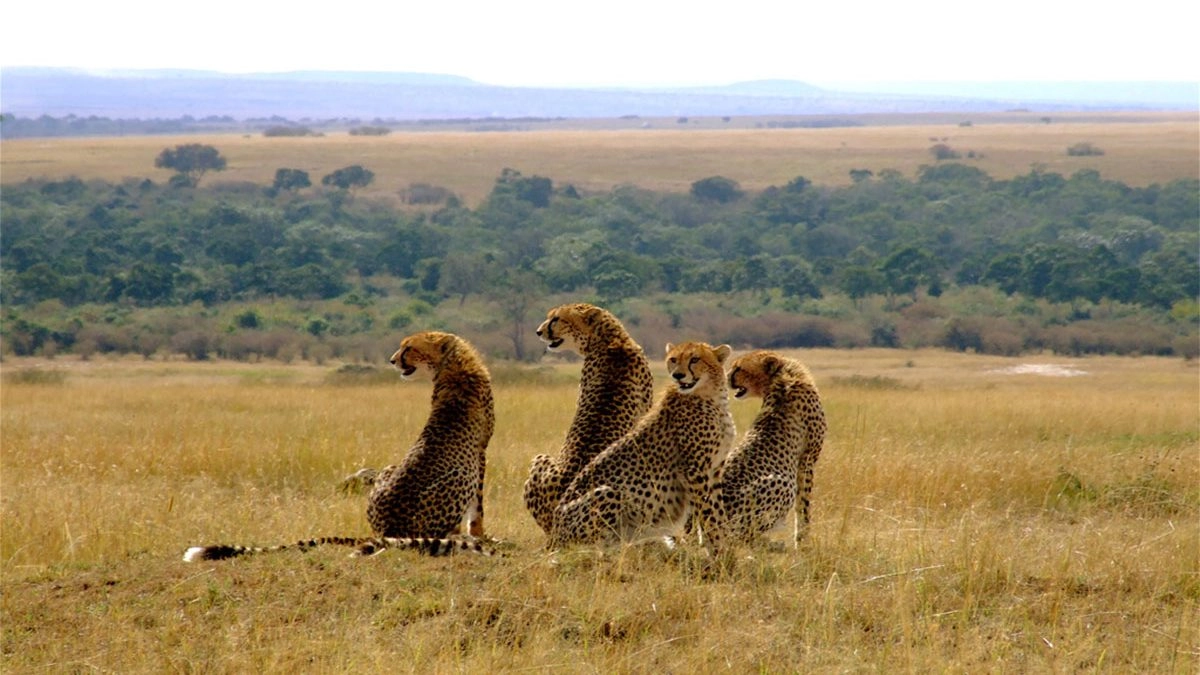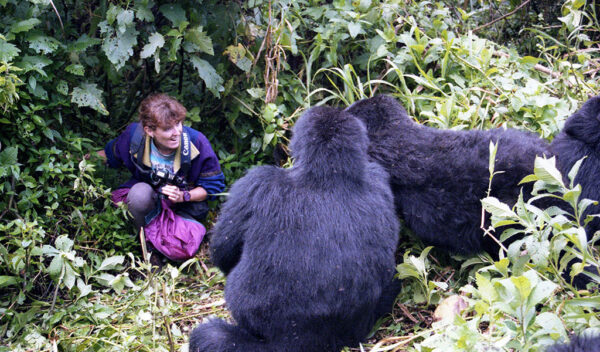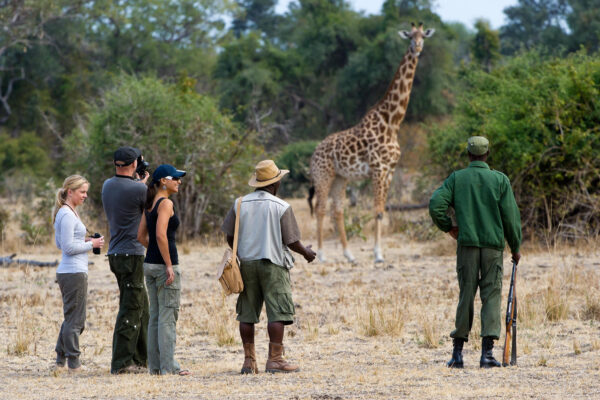
How Many Bird Species Can I See on a Uganda Birding Safari?
November 21, 2025How Many Chimps Are in Kibale National Park?
November 24, 2025How Long Should I Plan for a Wildlife Safari in Kenya?
How long should I plan for a wildlife safari in Kenya? This is one of the most common questions asked by travelers eager to explore East Africa’s wildlife wonders. Kenya, often considered the heart of Africa’s safari experiences, offers an extraordinary diversity of ecosystems—from the rolling savannahs of the Maasai Mara to the dramatic Great Rift Valley landscapes, and the pristine shores of Lake Naivasha. Planning the right duration for your Kenya Wildlife Safaris ensures that you maximize wildlife sightings, cultural interactions, and unique experiences while maintaining a comfortable and stress-free pace.
At Renai Safaris, we recommend designing itineraries that balance adventure, relaxation, and immersive encounters with nature. A typical Kenya Safaris journey may range from 5 to 14 days depending on your goals, whether you are interested in spotting the Big Five, experiencing the Great Migration, or combining Kenya Wildlife Safaris with other regional experiences like Uganda Gorilla Trekking Safaris or Uganda Chimpanzee Safaris. These extended itineraries allow travelers to enjoy multiple national parks, from Amboseli and Tsavo to Nakuru and Maasai Mara, creating a comprehensive safari adventure.
Moreover, considering the pace of travel, distances between parks, and opportunities for cultural experiences, asking how long should I plan for a wildlife safari in Kenya is essential for crafting an unforgettable journey. Combining Kenya Wildlife Safaris with Uganda Gorilla Safaris or Uganda Chimpanzee Safaris provides a unique East African safari circuit that blends savannah wildlife with primate trekking, making the experience both diverse and enriching.
Ultimately, the ideal duration depends on your priorities, desired level of immersion, and interest in combining safari activities across borders. Planning carefully ensures that your journey becomes a once-in-a-lifetime adventure that balances wildlife, culture, and scenic exploration.
Determining the Ideal Duration for Kenya Wildlife Safaris
When travelers ask, how long should I plan for a wildlife safari in Kenya?, several factors must be considered. Kenya boasts over 50 national parks and reserves, each offering distinct wildlife experiences. The Maasai Mara, known for its Big Five and seasonal Great Migration, typically requires at least three to four days to fully explore. Amboseli, with its iconic elephant herds against Mount Kilimanjaro, can be experienced in two days, while Tsavo East and West, due to their vast landscapes, might require three to four days.
At Renai Safaris, we emphasize that the ideal duration should align with your safari goals. Shorter trips of 5–7 days are perfect for travelers with limited time who want to focus on key parks and iconic wildlife sightings. Longer itineraries of 10–14 days or more allow for a deeper exploration of Kenya’s diverse ecosystems, including Kenya Birding Safaris, Kenya Cultural Safaris, and encounters with lesser-visited parks like Lake Naivasha, Hell’s Gate, and Meru National Park.
Additionally, travelers interested in combining Kenya Wildlife Safaris with Uganda Gorilla Trekking Safaris or Uganda Chimpanzee Safaris should consider a minimum of 10 days to ensure a smooth transition across borders while allowing ample time for trekking, game drives, and cultural immersion. For example, a 12-day itinerary could include Maasai Mara, Amboseli, and Nakuru in Kenya, followed by a transfer to Bwindi Impenetrable Forest or Mgahinga Gorilla National Park in Uganda for gorilla trekking.
Therefore, answering how long should I plan for a wildlife safari in Kenya requires balancing park priorities, wildlife interests, travel logistics, and optional cross-border adventures to create a memorable, comfortable, and immersive experience.
The Role of Park Diversity in Safari Duration
When considering how long should I plan for a wildlife safari in Kenya, park diversity plays a crucial role. Each national park and reserve offers a unique ecosystem and wildlife composition. Maasai Mara is famous for savannah predators, zebras, and wildebeest, while Nakuru National Park provides a haven for flamingos, rhinos, and hippos. Amboseli showcases large elephant herds against the backdrop of Mount Kilimanjaro, and Samburu’s arid landscapes host endemic species like the Grevy’s zebra and Somali ostrich.
Renai Safaris encourages travelers to allocate time based on park diversity. A balanced safari itinerary might involve three to four days in Maasai Mara, two days in Amboseli, and two to three days exploring Nakuru or Lake Naivasha. This approach allows visitors to witness a wide spectrum of wildlife behaviors and habitats while avoiding rushed travel between parks.
Moreover, park diversity is enhanced by combining Kenya Wildlife Safaris with Uganda Gorilla Safaris or Uganda Chimpanzee Safaris. Travelers can enjoy the vast African savannahs in Kenya and then trek through the dense tropical forests of Uganda. This dual experience enriches the safari journey, providing contrast between open plains wildlife and primate encounters. Families and adventurous travelers often find this combination highly rewarding, as it balances educational, cultural, and adventure components across different ecosystems.
Ultimately, park diversity directly influences how long your safari should last. The more parks and experiences you wish to explore, the longer you should plan, ensuring a complete and unforgettable Kenyan wildlife adventure.
Combining Safari Experiences with Uganda Gorilla Trekking
Many travelers asking, how long should I plan for a wildlife safari in Kenya? also want to know how they can include Uganda Gorilla Trekking Safaris in their itineraries. Combining Kenya’s open savannah wildlife experiences with Uganda’s forested primate habitats requires careful planning but creates an extraordinary multi-country safari experience.
At Renai Safaris, we often recommend a 12–14 day itinerary for travelers aiming to explore both Kenya and Uganda. This includes 6–8 days in Kenya for Kenya Wildlife Safaris and Kenya Birding Safaris, followed by 4–5 days in Uganda for Uganda Gorilla Safaris and Uganda Chimpanzee Safaris. This approach allows sufficient time for gorilla trekking in Bwindi Impenetrable Forest or Mgahinga National Park, while also enjoying classic game drives in Maasai Mara, Amboseli, and Nakuru.
Combining these experiences not only enhances wildlife viewing but also provides opportunities for Uganda Cultural Safaris, where travelers interact with local communities, explore traditional practices, and learn about conservation efforts. The cross-border experience offers a unique contrast between Kenya’s expansive savannahs and Uganda’s dense forests, adding depth and variety to the safari.
Thus, the question of how long should I plan for a wildlife safari in Kenya is closely linked to whether you intend to extend your journey into Uganda for gorilla trekking. A carefully planned 12–14 day itinerary ensures that travelers maximize wildlife encounters, cultural experiences, and adventure while maintaining a comfortable pace.
Seasonal Considerations for Planning Safari Duration
When considering how long should I plan for a wildlife safari in Kenya, it is important to factor in seasonal variations. Kenya experiences two primary dry seasons: January to February and June to October. These periods are ideal for wildlife viewing, as animals gather near water sources, and roads are more accessible. Conversely, the wet seasons (March–May and November–December) present lush landscapes, fewer tourists, and unique birding opportunities but may require additional travel time due to muddy tracks.
Renai Safaris recommends allocating extra days during wet seasons to ensure access to more remote parks and maximize wildlife sightings. For instance, Maasai Mara and Amboseli may require an additional day each during the rainy season to allow for flexibility in game drives. Birding enthusiasts might also extend their itineraries to enjoy Kenya’s abundant migratory species, making Kenya Birding Safaris a prime consideration.
Additionally, travelers combining Kenya’s wildlife experiences with Uganda Gorilla Trekking Safaris should consider Uganda’s dry seasons for optimal trekking conditions. Bwindi Impenetrable Forest is more accessible from June to September and December to February, ensuring comfortable hiking conditions and better gorilla visibility. Aligning safari durations with seasonal conditions ensures that travelers experience the best wildlife sightings, trekking experiences, and overall enjoyment.
Therefore, understanding the seasonal context is essential when planning how long your safari should last in Kenya, particularly if integrating multi-country adventures with Uganda.
Cultural Experiences to Complement Your Safari
Families and cultural enthusiasts often ask, how long should I plan for a wildlife safari in Kenya to ensure they can experience both wildlife and local traditions? Kenya is home to diverse ethnic communities, including the Maasai, Samburu, and Turkana, whose vibrant lifestyles offer immersive cultural insights. Kenya Cultural Safaris provide travelers with opportunities to participate in traditional dances, beadwork workshops, and visits to local villages, adding a rich human dimension to wildlife adventures.
At Renai Safaris, we recommend integrating at least 1–2 days of cultural immersion into your itinerary. This ensures that your safari is not solely about observing wildlife but also understanding the symbiotic relationship between communities and their environments. Combining these cultural experiences with Kenya Wildlife Safaris and optional Uganda Gorilla Trekking Safaris creates a comprehensive East African adventure.
Additionally, travelers may extend their safari to include Uganda Cultural Safaris or Rwanda Cultural Safaris if planning multi-country trips. This combination provides a holistic view of East African heritage, blending wildlife encounters with rich, hands-on cultural experiences. Cultural immersion enhances the overall safari experience, making each day meaningful, educational, and memorable for all ages.
Hence, planning your safari duration should consider not only wildlife but also the opportunity to connect with local cultures, ensuring a well-rounded and authoritative East African safari experience.
Practical Tips for Planning Your Safari Duration
When pondering how long should I plan for a wildlife safari in Kenya, practical considerations can guide your decision. Travel distances between parks, accommodation options, the number of desired wildlife encounters, and seasonal conditions all impact itinerary length. At Renai Safaris, we advise allocating at least three days per major park to allow sufficient time for multiple game drives, relaxation, and photography.
For travelers combining Kenya Wildlife Safaris with Uganda Gorilla Trekking Safaris, a minimum of 12 days is recommended to comfortably cover both experiences. This allows for travel time between Kenya and Uganda, gorilla trekking permits, and optional Uganda Chimpanzee Safaris or birding tours. Longer trips of 14 days or more provide flexibility, enabling visits to lesser-known parks like Meru, Lake Naivasha, or Samburu while maintaining a relaxed pace.
Additional tips include considering guided versus self-drive options, aligning safari duration with family or group fitness levels, and allowing buffer days for unplanned wildlife sightings or cultural excursions. By factoring these elements into your itinerary, travelers can answer how long should I plan for a wildlife safari in Kenya with confidence, ensuring a seamless, memorable adventure.
Ultimately, careful planning maximizes wildlife sightings, cultural immersion, and cross-border opportunities, establishing your safari as an expert-level East African experience.
Conclusion: Crafting the Perfect Safari Duration in Kenya
In conclusion, answering how long should I plan for a wildlife safari in Kenya depends on your priorities, interests, and the potential to combine experiences across East Africa. A balanced itinerary typically ranges from 7–14 days, allowing travelers to explore Kenya’s diverse parks, enjoy Kenya Wildlife Safaris, Kenya Birding Safaris, and Kenya Cultural Safaris, and optionally combine Uganda Gorilla Trekking Safaris and Uganda Chimpanzee Safaris for a multi-country adventure.
At Renai Safaris, we design itineraries that emphasize experience, expertise, and authority, ensuring travelers witness iconic wildlife, engage with vibrant cultures, and enjoy seamless travel logistics. By carefully planning the duration, families and solo travelers alike can optimize every day of their safari, achieving unforgettable encounters with Africa’s most iconic wildlife while immersing themselves in cultural and conservation experiences.
So, when asking how long should I plan for a wildlife safari in Kenya, the answer is more than a number of days—it’s about crafting a holistic, enriching, and expertly guided journey that showcases the best of Kenya, Uganda, and East Africa as a whole. With thoughtful planning, your safari becomes a transformative experience that resonates long after the journey ends.





